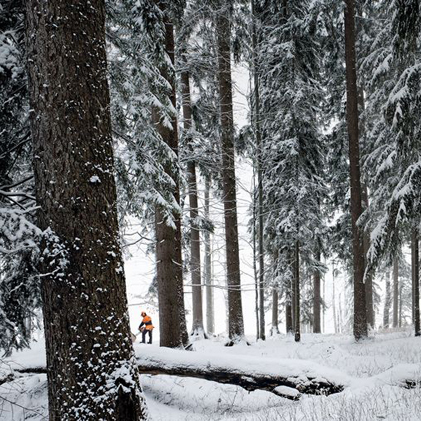
How to Protect Your Arborist Equipment Through Winter
As Arborists, we work throughout the year regardless of the season or weather condition. Although by choice we’d order mild and dry weather all year round, the cold and wet months are unavoidable and winter always brings its own set of issues to navigate.
Contrary to most other outdoor industries, the chances are that as an arborist you’re at your busiest through the colder months. Whilst maintaining your chainsaws, ropes, and other equipment is important all year round, extra care is needed in the winter.
Machines can stall, corrosion can set in and metal parts can become brittle with cold temperatures. So how do you care for your equipment when the winter months roll in? Improperly storing equipment can be as detrimental to it as leaving it out in the elements.
Proper Storage
If you have any machines that are only used infrequently, make sure that any metal parts are completely dry and free of dirt. Clean the blades/edges of any chainsaw bars, axes and shears, making sure to get rid of sawdust, sap, plant residue and soil. Once they’re clean, dry them properly and spray silicone spray wherever it’s needed. Try to store them in an area that isn’t subject to sudden temperature changes or frost.
If your machines have batteries, store them separately.
Contrary to popular belief, it’s better to fill any dormant machines with fuel, as any empty space in the tank will invite rust and corrosion. So, before storing, fill the tank with clean oil and allow your machines to run for a minute or two to ensure that the insides are properly coated. This should prevent your chainsaws and other machines from stalling when you next put them to use.

Winter-proof Chainsaws
When using chainsaws during the winter, it’s wise to make some adjustments.
Many professional chainsaws manufactured nowadays have a winter mode, which can be activated by flipping the switch on the shutter. This turns on the chainsaw’s preheater system. Without a pre-heater system, the carburettor may freeze over, causing the engine to fail.
It’s important to take a bit of care of how you cut, not just what you cut with when working in winter. Cutting through frozen wood is several times harder than ordinary wood, and it can damage your chain and guide bar. Decreasing your usual cutting angle by 5 degrees puts less stress on the saw.
For more advice on general chainsaw best practice, all year round, see our article; https://www.landmarktrading.com/blog/guide-chainsaw-safety-best-practice/
Proper Winter Gear
It goes without saying that if you want to cut trees during winter, you need clothes that will protect you from both the cold and the hazards of your job. Purchasing a new work jacket with extra insulation and high visibility – for the darker days and earlier nights – can be a key investment that will last you years of Winter.
Another very worthwhile investment for the darker months is a good quality helmet torch, giving you the added light needed when working in poor or dull conditions.
PPE or Personal Protective Equipment is important throughout the year, even more so during winter. Aside from your usual chainsaw helmet and ear protection, invest in good eye protection. Clean and store them properly after a day’s work to prevent scratches.
Climbing Equipment and Harnesses
Maintaining your climbing ropes during winter time can be a challenge. On the one hand, friction and heat are less of an issue when it’s cold, but moisture and sharp (frozen) edges can cause ropes to deteriorate.
Frozen timber will tend to splinter easily, so take extra care not to cut or fray your ropes against a sharp edge. After using your climbing equipment, it’s worth laying your kit out somewhere warm (but not by a direct heat source) to dry out thoroughly, as moisture can compromise material strength.
As for the other parts of your climbing equipment such as karabiners and connectors make sure you lubricate them often. Check wearing parts of your harness and climbing equipment for loose connections, frayed edges or broken stitching and make sure you replace wearing parts where necessary.
PPE
No matter how great the temptation, don’t put your forestry boots next to a direct heat source to speed dry them for the following day. This dries out the leather causing it to rapidly become brittle and crack, or split. Stuff them with screwed up newspaper and leave in a warm location.
With chainsaw trousers, don’t be tempted to put them in the tumble drier as this causes the fibres of the blocking material to expand massively, effectively making the inside of the trouser ‘swell up’ and become far too tight to wear. Again, dry out slowly in an ambient location.
With work boots and trousers, had you thought about buying two pairs and rotating them, so you always have a dry pair to put on? Whilst pricey in the initial outlay, they’ll get half the wear and so cost you no more in the long run – and chances are you’ll be enjoying perfectly dry clothing whilst colleagues are putting up with yesterday’s damp!
Overall, the key to keeping your equipment safe and efficient during the winter months is proper cleaning and storage, lubrication and constant checking. This way, not only do you save yourself from extra money in repairs and part replacements, it also ensures your safety while working out in the field.
For more information on any of the equipment mentioned here, don’t hesitate to contact us on, 01780 482231.
